NOVEMBER 10, 2021: On Wednesday, we visited three different places – Óbidos, Leiria, and Ourém.
The day started in Óbidos, a small medieval town with a very well preserved and picturesque historic center.
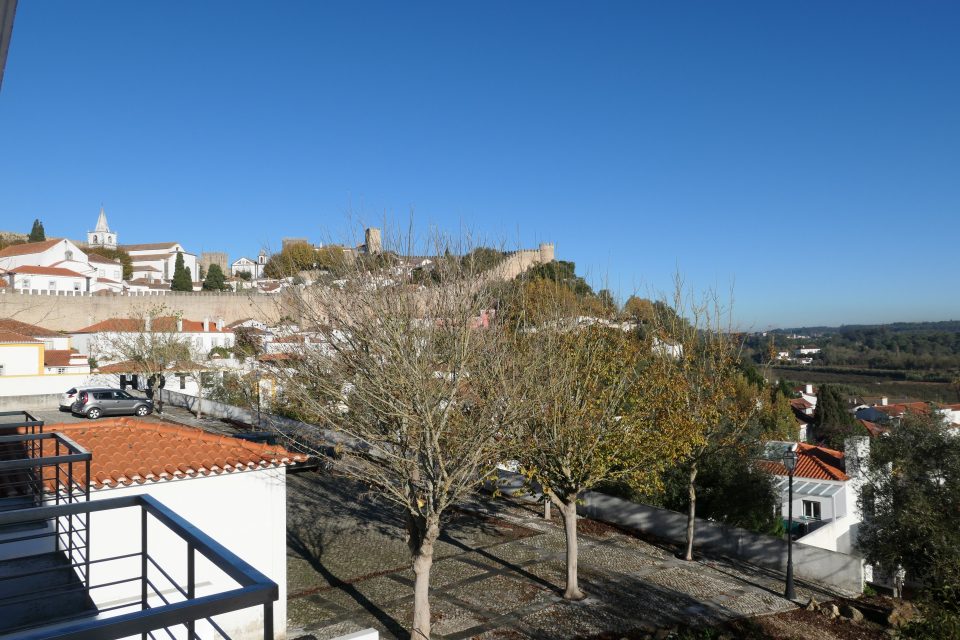
Morning view from our apartment terrace
We entered the town through a small gate next to our Airbnb. One street over, we came across a building that might have been a synagogue. Most buildings in Óbidos are whitewashed, but this building stands out with its stone façade.
The building stands in the middle of what was formally the Jewish quarter, and is not officially recognized as a synagogue, but rather as a place for Jews to meet and pray in Hebrew. Not sure what they mean by that. All this is something I learned from my internet research, and here we found no sign indicating anything special about this building. So was this a synagogue, maybe? Today, it is a guesthouse.
Inside the walled city, there are two main roads, sparsely dotted with stores and restaurants. Most of the city is still a place where locals live. The walls of the houses are pristine white, everything was clean and sparkling in the sun.
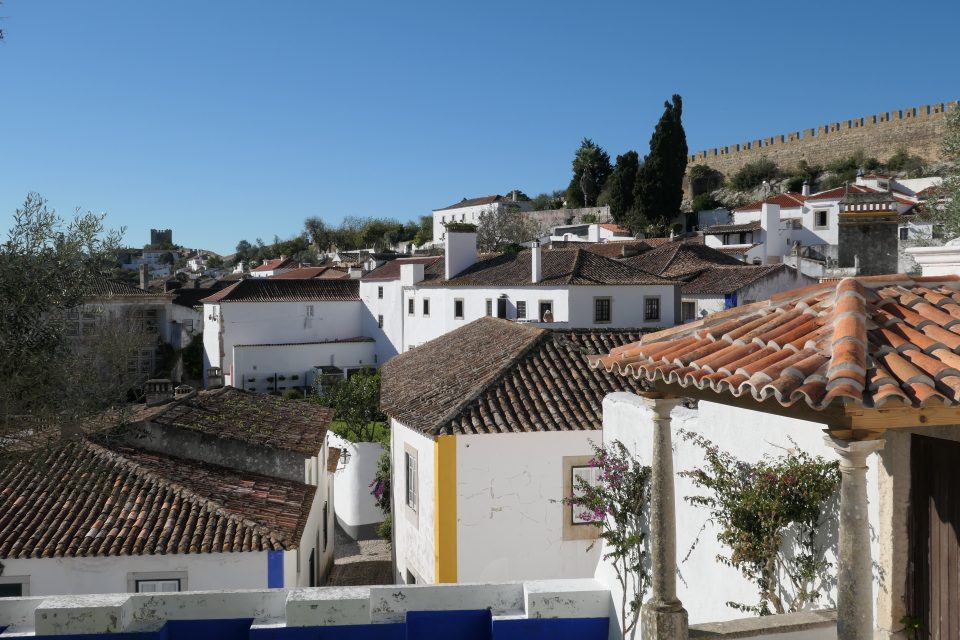
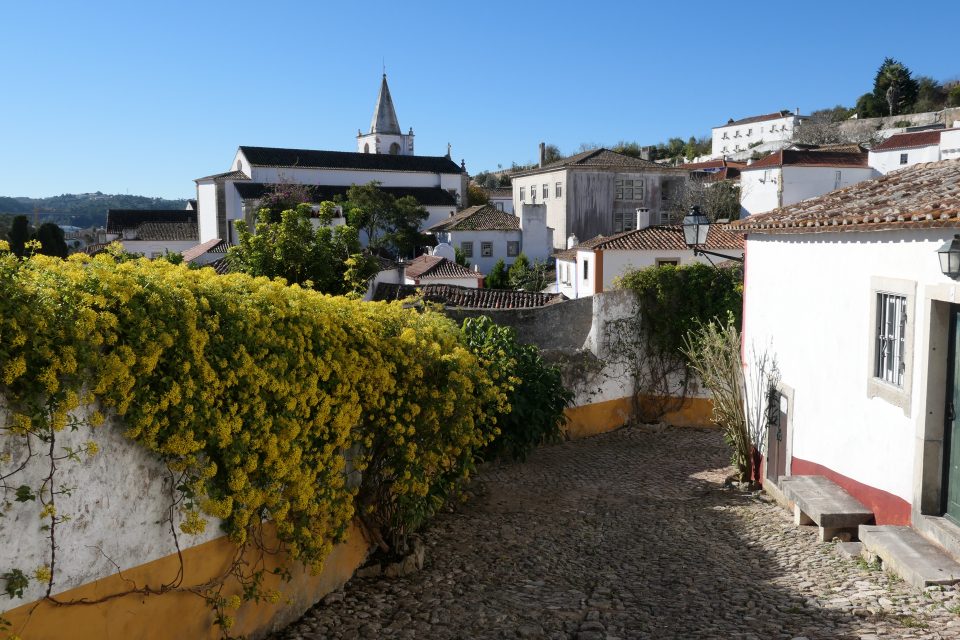
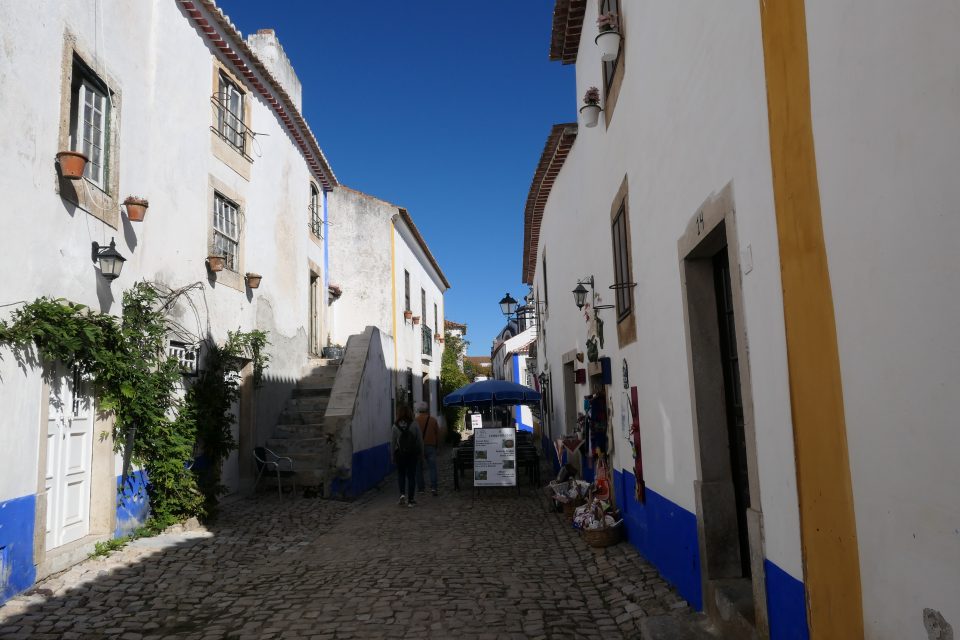
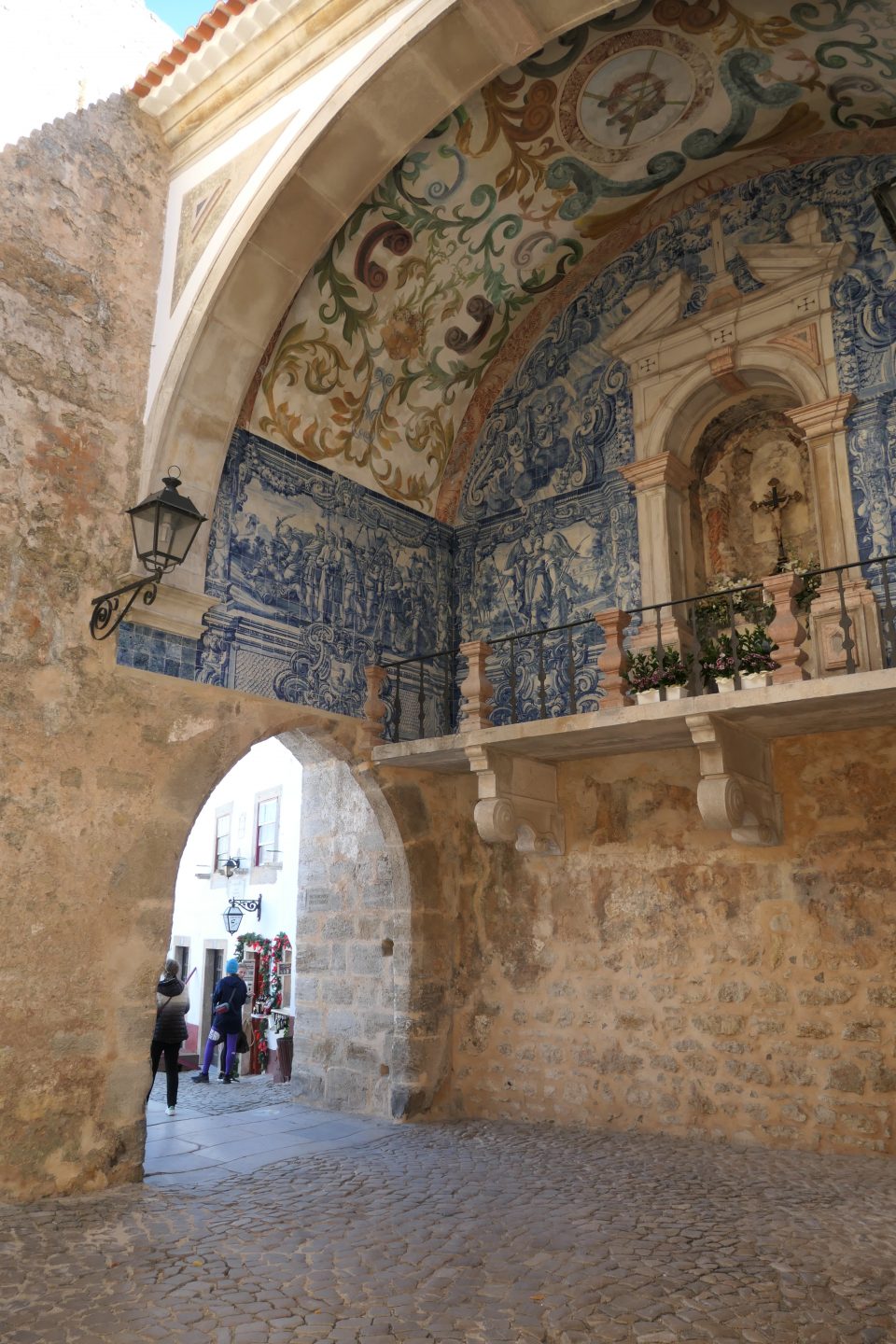
The main gate to Óbidos 
The Óbidos castle – today a private hotel 
Selling Ginja
The town is known for its bookstores. One is inside a building that was once a church. Another sells both books and organic vegetables. One was together with a sardine store.
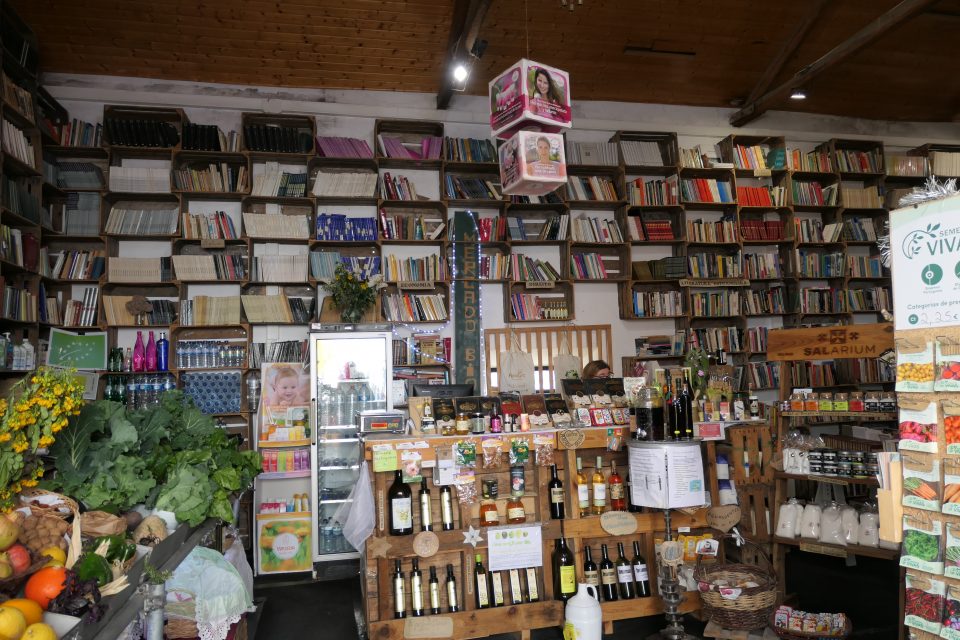
Bookstore and organic vegetables all-in-one 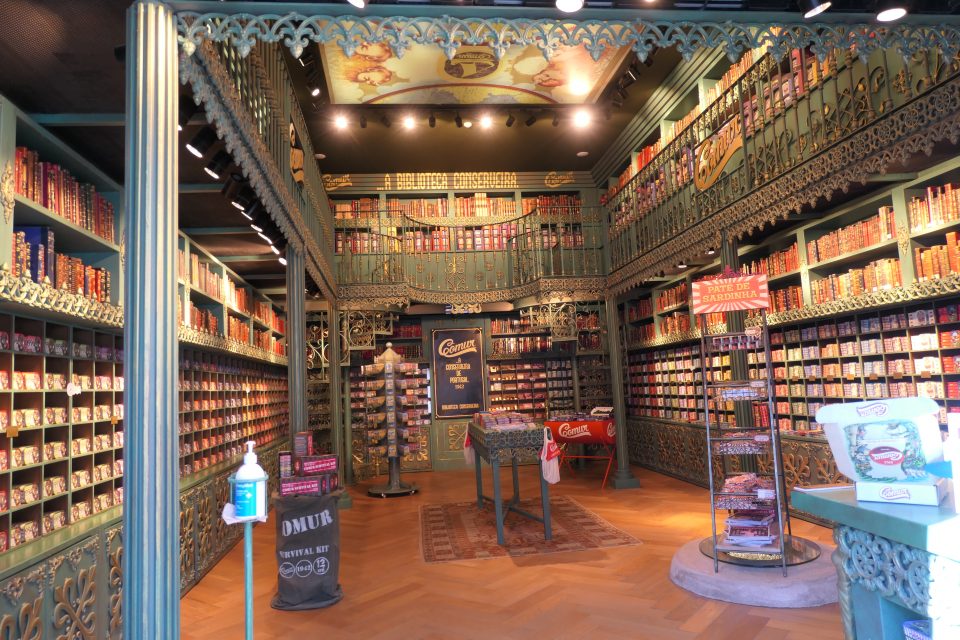
Books and sardines
From Óbidos , we traveled north to Leira.
Leiria is a big city with lots of apartment buildings. Once again, there is a castle on top of a hill overlooking the city. The historical area is the old Jewish quarter.

Leiria castle at the top of the hill
Our destination, the Leiria Intercultural Dialogue Center, was now closed for siesta. While waiting for it to open, we enjoyed a lunch at Kukicha, a vegan restaurant. Although mostly empty when we arrived, while there the placed filled up and turned people away. The restaurant basically serves one dish that changes every day. Lunch was good – first a beetroot soup with pistachio pesto, and then a pasta main dish.
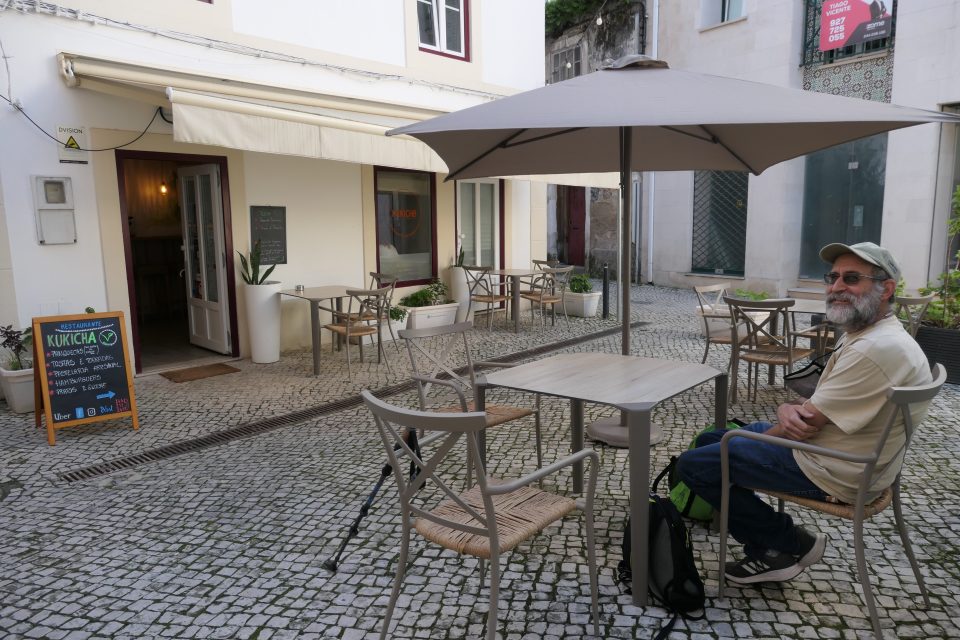
Kukicha vegan restaurant in Leiria 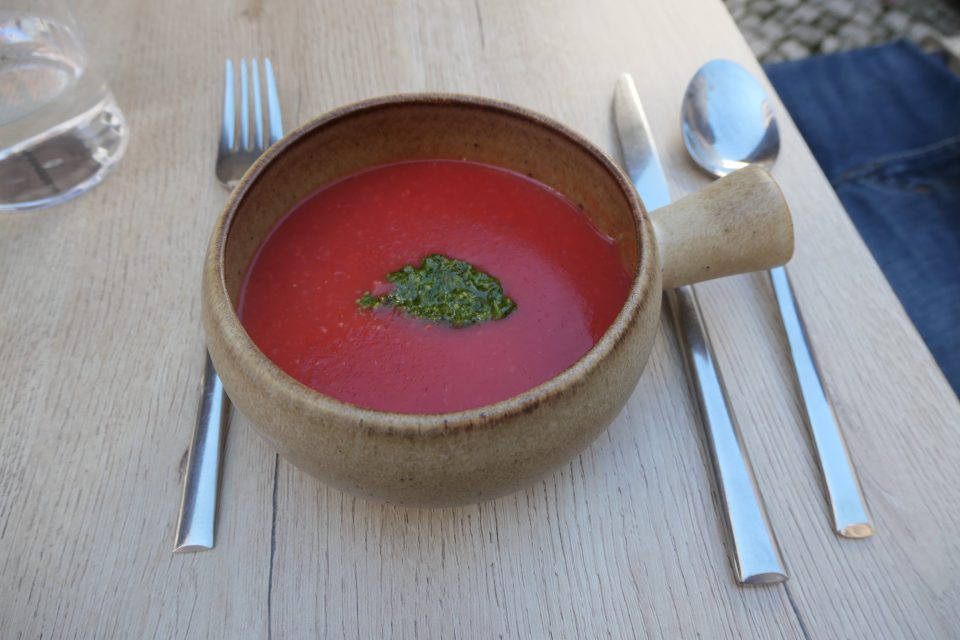
Beetroot soup with pistachio pesto
After lunch we walked around and discovered a couple of things connected to the Jewish past of Leiria. The first that we stumbled upon, was a painted tile depicting the printing of a book. In 1492, the Jewish Orta family arrived in Leiria and established the first printing press in Portugal. Several famous books were printed here, including the Almanach Perpetuum written by the Sephardic Jew, rabbi, astronomer, mathematician and historian Abraão Zacuto. This book has astronomical tables that greatly helped the navigation of the voyages of the Portuguese explorers.
We still had some time to wait until the center opened, so I sat on a bench in the Praca Rodirgues Lobo, a square with several restaurants, while Mark returned to the car to add more parking time to the meter. Turns out that Francisco Rodirgues Lobo was a Portuguese poet, born of rich and noble New Christian parents in Leiria. Over and over again, we run into esteemed personalities, who were known to be New Christians (converted Jews).
It was now time to visit the Leiria Intercultural Dialogue Center. The center is housed in a church, said to be built on the foundations of a synagogue, maybe? It has a very small exhibit, one display about Judaism, one display about Christianity and one about Islam – the religions of the book, as it called them. In a small side room, is one interactive display that offers more information about the Jewish history of Leiria.
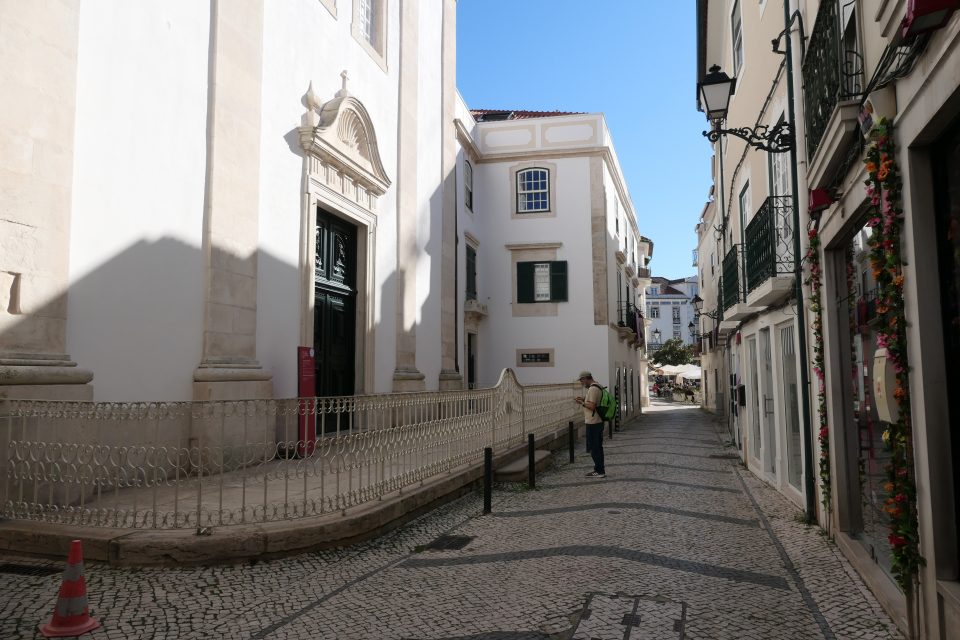
Entrance to the Leiria Intercultural Dialogue Center 
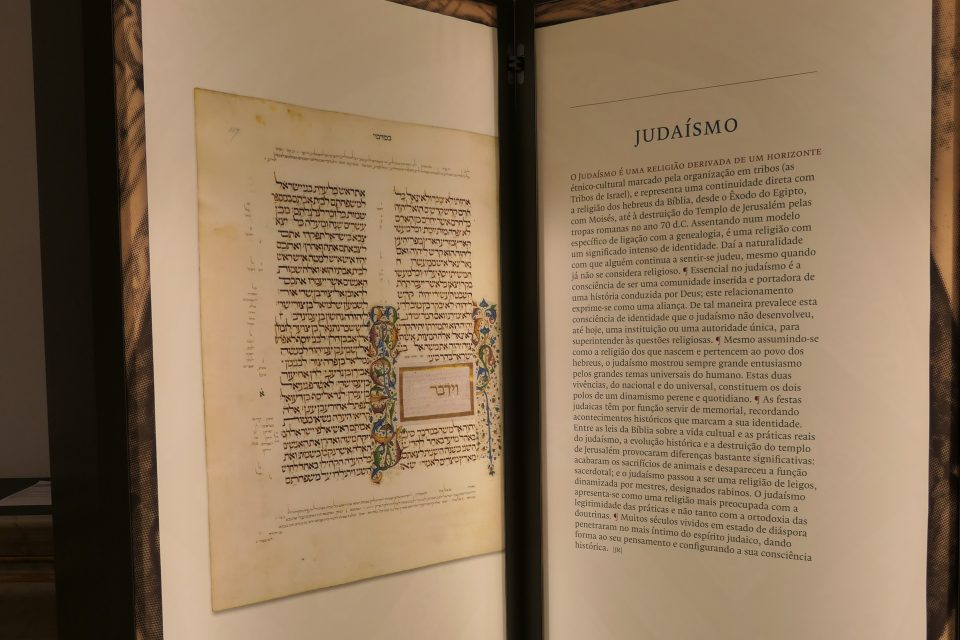
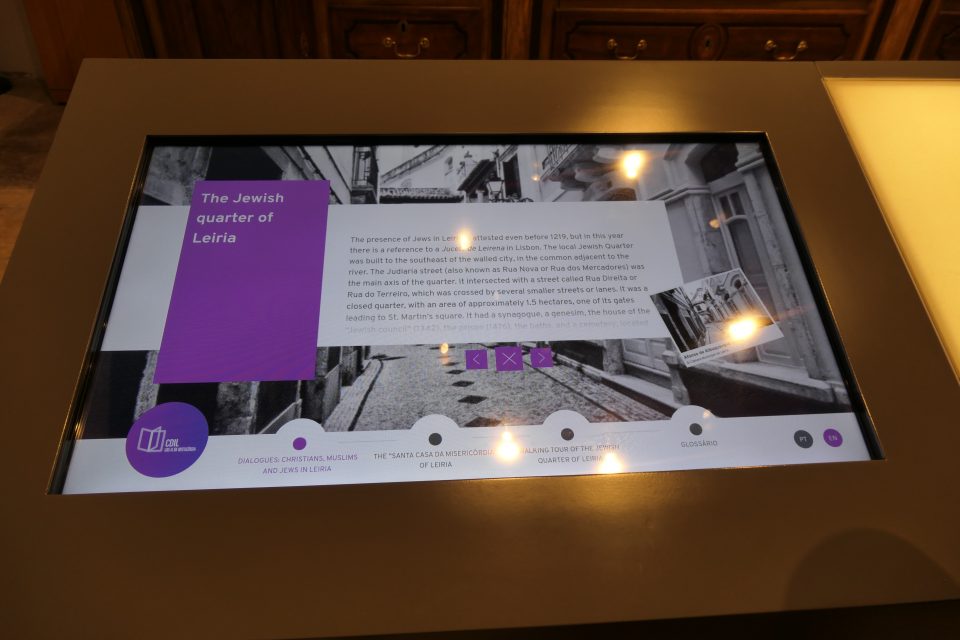
To us, the most intriguing item in the museum, was the pamphlet they handed out at the entrance. This was called A Walking Tour for Jewish Leiria, with 15 points of interest. Upon closer inspection, very few of the places were related to Jewish Heritage. It was more like a map of what to see today in the area that once was the Jewish Quarter, such as the St Augustine Church and Leiria Cathedral. Less relevant than we thought.
From there, we returned to our car, and continued to Ourém . This was not a destination we had originally planned on visiting. While in Lisbon, I received a newsletter from Jewish Heritage Europe with an article about a building, thought to maybe be a synagogue in the village of Ourém, that was recently purchased and will be restored. Ourém was a town that we would pass anyway as we drove between Leiria and Tomar, and so we added it to our itinerary as a place to stop.
All the information we had, was only the scant details that were in the newsletter. We decided to try to locate the building based on the photo in the article. We learned over the past two days, that the Jewish quarter is always in the historical district near the castle. We set the GPS to take us to the Ourém castle. As we approached the town, we could see the castle from far away, perched at the top of a very large hill. Our car climbed the steep, windy road and we found ourselves at the gate to the city walls, high above the newer buildings of the town below. Breathtaking views. We parked and started walking, playing detective and looking for the building that matched the photo. We reached the opposite end of the historical center, where there was the castle, without any luck. A local guide was there and we showed her the photo of the building we were looking for. She knew right away where it is, and pointed us in the right direction.
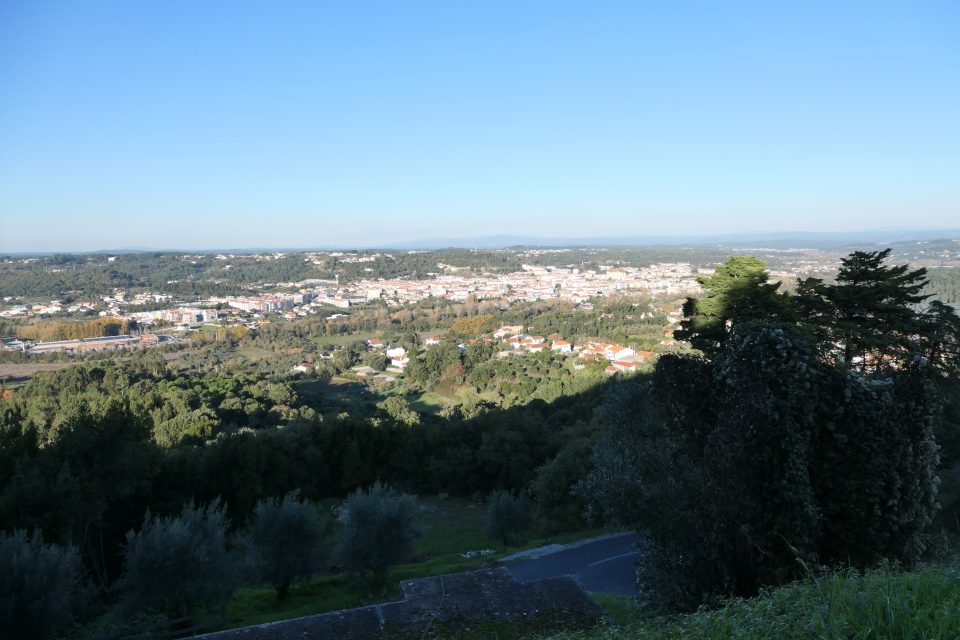
The view from the gate of the town 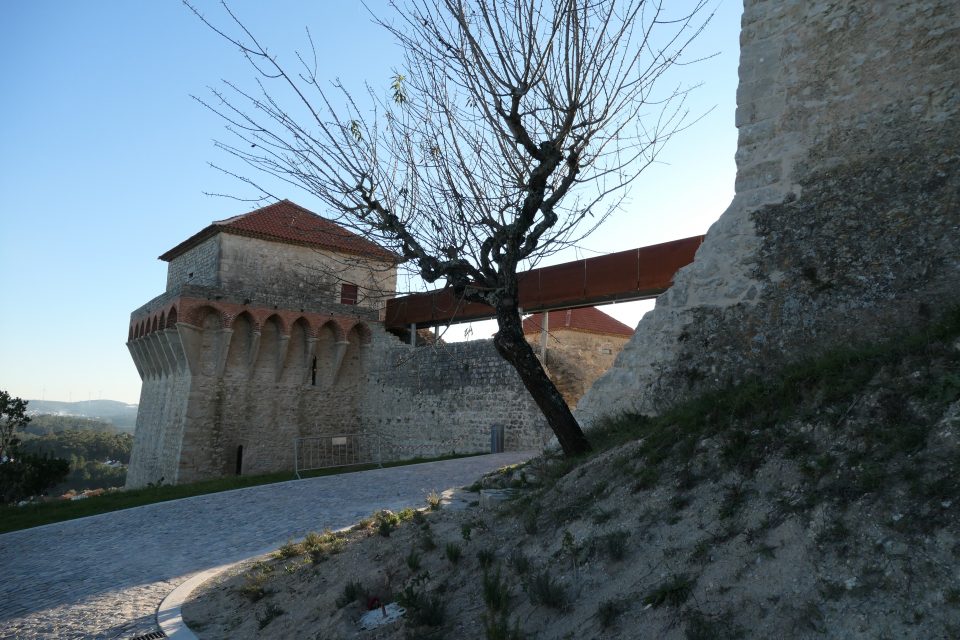
The Ourém castle 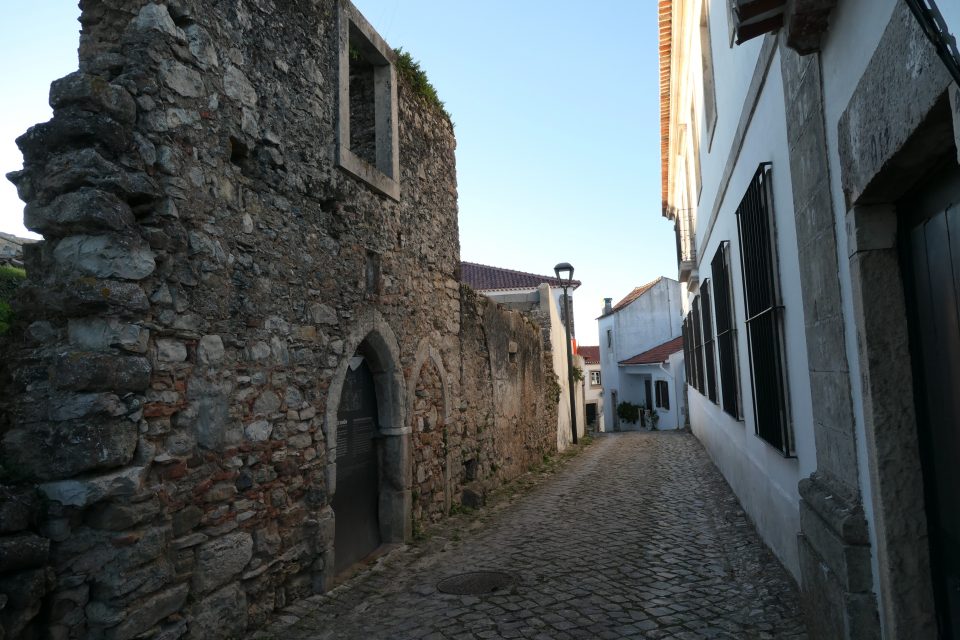
Found the building! 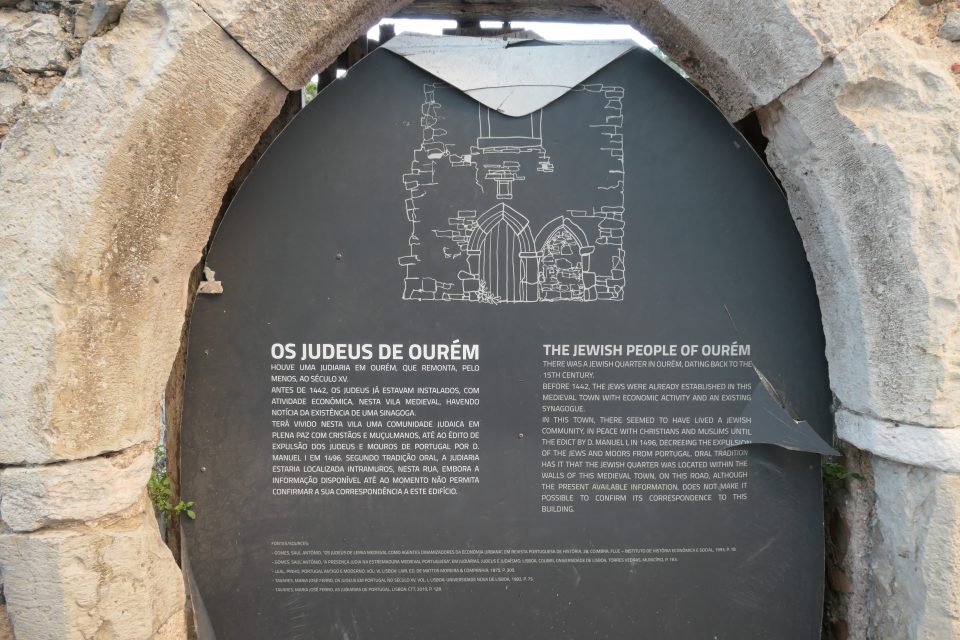
As the sign on the building says, was this a synagogue, maybe?
From Ourém we continued to Tomar. In Tomar, tomorrow we will see what was for sure a medieval synagogue – the oldest preserved synagogue in Portugal. No maybes about it.
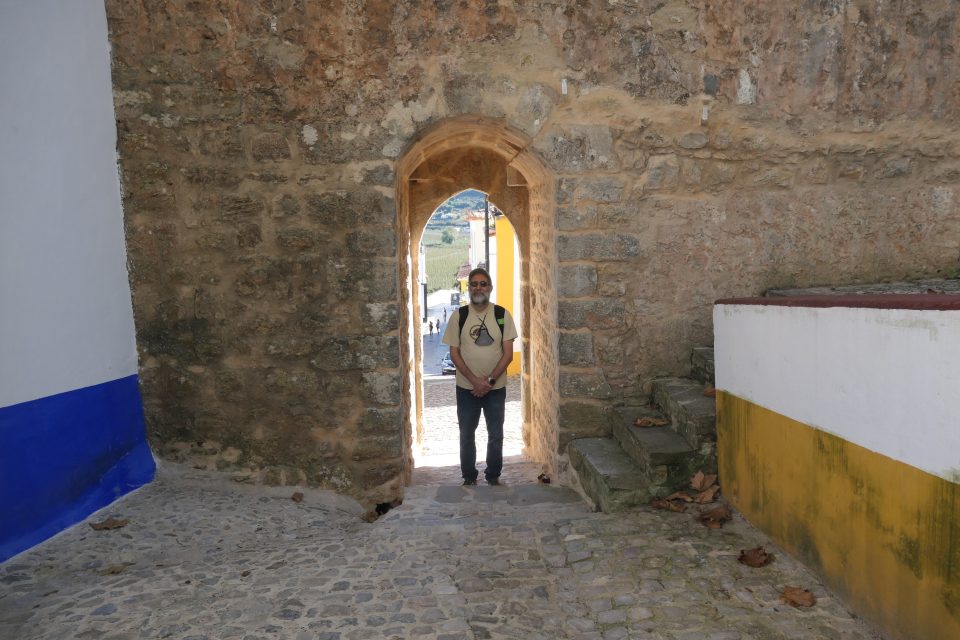
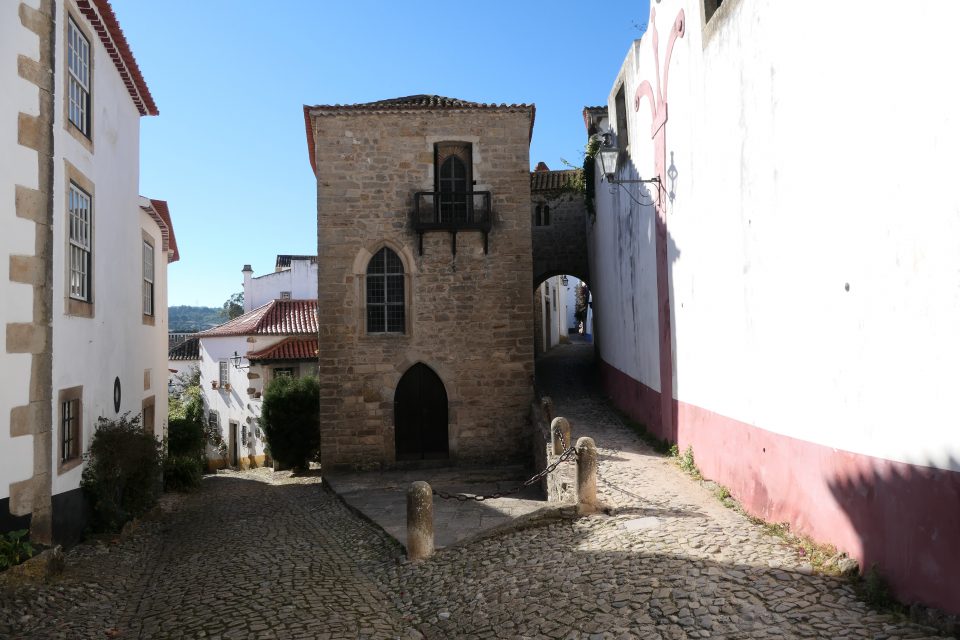

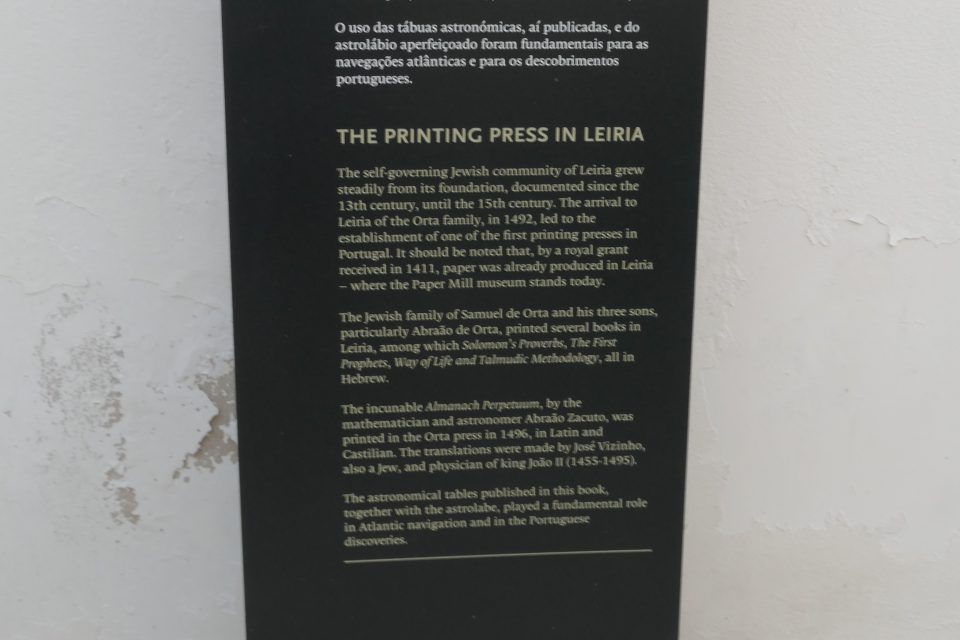
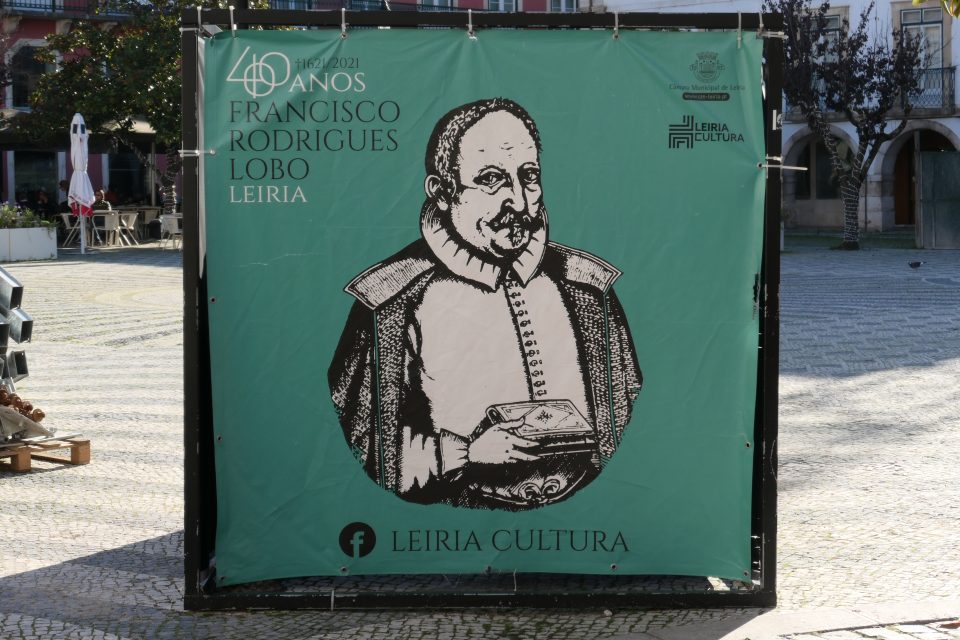
You cover so many places in a day!